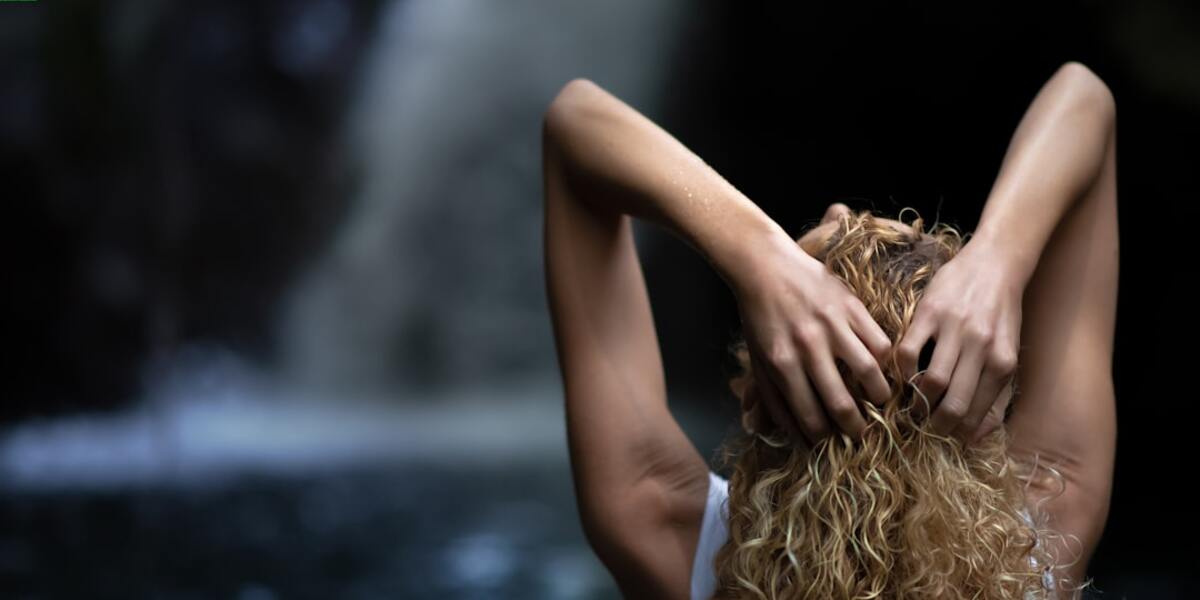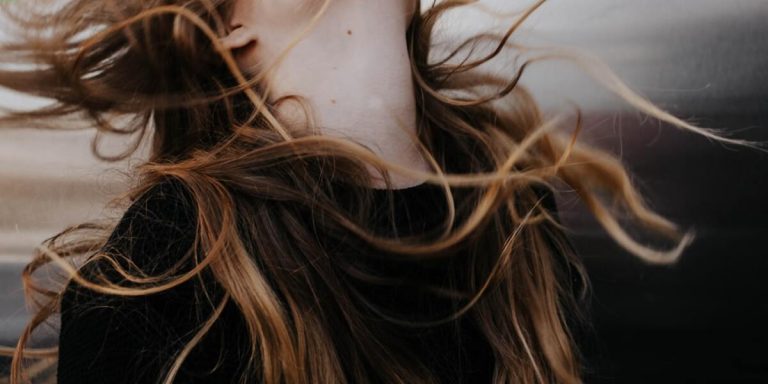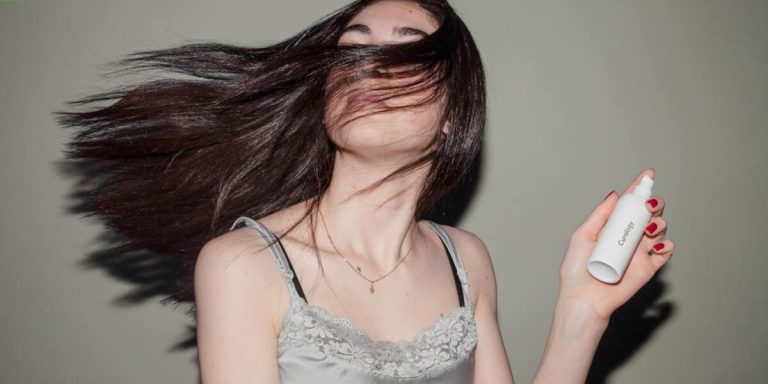Best Treatment for Postpartum Hair Loss: A Comprehensive Guide for New Moms
Experiencing hair loss after childbirth can be distressing, but it’s a common occurrence among new moms. The quest to find the best treatment for postpartum hair loss often leads to an overwhelming number of options, making it challenging to pin down what really works and can truly bring back your lush locks after baby.
Our guide aims at deciphering this complex landscape by presenting clear-cut information on effective treatments available today. We will delve into why postpartum hair loss occurs in the first place and highlight some successful strategies that have helped numerous women regain their confidence with vibrant, healthy tresses during the daunting phase of motherhood.
Did you know?
Did you know? Postpartum hair loss, clinically known as telogen effluvium, affects nearly 40-50% of women and usually peaks three to four months after childbirth. It’s a natural physiological response that can lead to excessive hair shedding but is temporary in most cases.
Understanding Postpartum Hair Loss: Causes and Symptoms
Understanding postpartum hair loss opens the doorway to find effective solutions. After childbirth, many new mothers experience startling hair thinning and shedding – a condition known as postpartum alopecia. This type of hair loss is majorly connected with changes in hormones during pregnancy and after birth.
During pregnancy, increased levels of estrogen prolong your growing phase resulting in thick, lustrous locks. Post-delivery hormone levels drop dramatically causing more hairs than normal to enter into the falling out stage- triggering accelerated hair thinning or bald spots in some cases.This explanation provides an insight into why post-partum can be such a harrowing time for women who have just given life.
Symptoms of postpartum hair loss vary from person to person but mainly include:
- Excessive shedding during combing or washing
- Finding large clumps of hair on pillows
These signs suggest you might be experiencing postpartum hair loss. The significant changes in appearance often lead to an identity crisis. It’s crucial to recognize the condition before exploring treatments for postpartum hair loss. Understanding the cause is essential to comprehend the effect, and remember that each individual’s journey will differ due to their unique biology.
Recognizing the Signs of Postpartum Alopecia
The dramatic hormonal fluctuations during pregnancy often culminate in postpartum hair loss, also called telogen effluvium or postpartum alopecia. Recognizing the signs of this condition is critical to finding an effective response and remedying the situation.
Hair typically sprouts thicker and fuller during pregnancy due to elevated estrogen levels which extend the growing cycle of hair follicles. However, after childbirth when these hormone levels normalize gradually; many hairs enter into a resting phase simultaneously leading them to shed more than usual around 3-6 months post-pregnancy.
Firstly, noticeable thinning primarily at your temples can be observed as it’s where women predominantly experience initial shedding. Many describe their receding hairline similar to ‘M’ shape like in male pattern baldness but remember it’s temporary! You might also witness larger clumps of strands coming off while brushing or showering – possibly causing panic if unaware about its normalcy among new mothers.
Hormonal Changes Contributing to Hair Shedding After Childbirth
Postpartum hair loss is a common occurrence in many women after childbirth and it’s driven predominantly by hormonal changes. These fluctuations primarily involve estrogen, progesterone, and other hormones like prolactin that regulate the body’s functions and overall wellbeing.
Pregnancy increases estrogen levels, extending the hair growth phase and leading to thick, shiny hair. However, after childbirth, a rapid decline in these hormones to normal pre-pregnancy levels—known as an ‘estrogen drop‘—causes more hair to shift from the growing phase (anagen) to the resting phase (telogen). Around three months later, significant shedding occurs called telogen effluvium, indicating postpartum alopecia or hair loss.
Progesterone too plays its role here. This hormone also increases during pregnancy leading to sebum production reduction thus less oily scalp conditions promoting healthy follicles & rich mane development whilst pregnant. But again similar pattern follows when birthing sees progesterone levels nosedive causing regressive impacts on newly formed follicle health with increased shed rates observed subsequently.
Prolactin responsible for milk production has been linked indirectly with thinning strands during lactation periods hence more studies are underway currently focusing on understanding this correlation better within the context of post-delivery maternal balding concerns.
Scientifically-Proven Treatments for Postpartum Hair Regrowth
Hair loss following childbirth, commonly known as postpartum hair loss, can be a distressing experience for many women. The hormone fluctuations during pregnancy and post-delivery often lead to thinning or shedding of hair. But fret not!
Science has stepped in with several proven treatments that promise effective results against this temporary concern.
One of the most popular scientifically-backed solutions is the use of Minoxidil (Rogaine). This FDA-approved topical treatment helps stimulate your scalp and encourages new growth while preventing further hair fall. It’s easy to apply at home and comes with minimal side effects making it one of the first choices recommended by dermatologists.
Another promising measure includes laser therapy devices such as combs or helmets emitting low-level lasers designed particularly for treating female pattern baldness including postpartum alopecia. These light-based therapies work by boosting cellular energy production which then stimulates dormant follicles into active ones thereby triggering regrowth.
Nutrient supplementation has also shown significant results when combating hair shedding after childbirth. Iron, Vitamin D3, Biotin are some essential nutrients required for healthy tresses and replenishing their levels through customized supplements may strengthen strands from within reducing chances of breakage significantly.
While these treatments have scientific backing; each woman’s journey towards recovery will differ based on individual health conditions and lifestyle factors such as diet or stress management strategies employed parallely alongside medical interventions hence patience remains an important virtue throughout this process.
The Role of Nutritional Supplements in Enhancing Hair Strength
Nutritional supplements can play a significant role in managing postpartum hair loss and promoting regrowth. They work by providing essential nutrients that are pivotal to maintaining healthy hair growth.
Some of the most effective nutritional supplements scientifically proven to aid with postpartum hair strength include:
1. **Biotin**: An integral part of various bodily functions, biotin is particularly renowned for its efficiency in enhancing our skin, nails, and specifically – our hairs’ health status. The deficiency of Biotin often results in brittle hair or even balding at times; thus supplementing it can potentially avoid such unpleasantries.
2. **Iron**: Iron promotes better oxygen transportation across your body including scalp which encourages healthier follicle function and consequently improved quality/quantity of new strands.
3. **Vitamin C**: This vitamin helps increase iron absorption from foods while producing collagen—an important component promoting robustness within each strand itself eliminating their potential breakability or fall out chances.
5: Pair these up with balanced diet comprising necessary proteins/carbs plus plenty rest as advised medical professional certainly setting groundwork successful recovery journey following phase delivery added bonus having fuller voluptuous locks.
Topical Treatments and Their Effectiveness on Scalp Health
Experiencing hair loss after pregnancy can feel quite distressing. However, finding the best treatment for postpartum hair loss doesn’t have to be complicated or intimidating. There are an array of scientifically-proven topical treatments available that specifically cater to improving scalp health and encouraging new growth.
One such solution is Minoxidil (Rogaine) – one of the most common over-the-counter options that’s been extensively studied in clinical trials globally throughout 2023. As a vasodilator, it increases blood flow to the areas where it’s applied thereby stimulating dormant follicles into producing healthy strands again.
Another popular choice amongst women battling postpartum hair fall is a range of Biotin-infused products like certain shampoos and conditioners. The power-packed vitamin helps strengthen existing locks while also fostering the emergence of fresh shoots.
Equally effective but lesser-known is Spironolactone – a potent anti-androgen used topically which slows down shedding by blocking DHT receptors on your follicle cells hence defending against hormonal imbalances often linked with birthing recovery periods.
A novel group within this sphere includes caffeine-based solutions too: enticing research reveals its impressive prowess at lengthening individual hairs’ lifecycles resulting in lowered fallout rates overall plus denser mane looks as well!
Lifestyle Adjustments to Manage and Mitigate Postpartum Hair Thinning
Lifestyle tweaks can play an invaluable role in managing and mitigating postpartum hair thinning. It’s crucial to note that the best treatment for postpartum hair loss isn’t just about topical applications or medical interventions—it also encompasses a holistic approach, including diet, stress management, and gentle care of your scalp.
Proper nutrition is paramount as you navigate this phase. Maintaining a balanced diet rich in vitamins such as Biotin (also known as vitamin H), Zinc and Niacin can considerably aid the health of your tresses. In addition to your nutrient intake through meals, consider talking with healthcare providers regarding multivitamins or supplements to ensure that necessary nutrients are not deficient.
Incorporating stress-reducing practices like meditation or yoga into everyday regimens could go miles towards reducing hormonal imbalances which often contribute significantly to hair fall post-birth. Furthermore, avoid aggressive styling techniques during this period because harsh brushing or heating tools may aggravate fragile strands leading up-to more shedding than usual.
Ultimately remember – it’s normal! Post-partum Hair Loss is something experienced by most women after childbirth due-to fluctuating hormones levels so don’t panic but take proactive steps instead towards healthier locks today!
Importance of Balanced Diet for Healthy Hair During Post-Birth Recovery
To have healthy hair during post-birth recovery, it’s key to include proteins in every meal you consume daily. Protein helps produce keratin, which is vital for maintaining the strength and thickness of your strands.
Certainly not forgetting iron-rich foods such as spinach and lentils. Iron bolsters blood supply towards follicles boosting growth while aiding restoration of strength lost during birth.
Moreover incorporating Vitamin C rich sources like oranges or strawberries can significantly enhance absorption of iron leading to better outcomes with regards each strand’s vitality.
Biotin (Vitamin B7) is another magical ingredient that should be included within one’s diet when considering best treatment for postpartum hair loss; found mainly in eggs & nuts – known both promote strong healthy locks by helping form protein-based cells directly linked enhancing its robustness even further after child birth.
Stress Reduction Techniques to Promote Natural Hair Growth
Stress is a significant contributor to postpartum hair loss. That’s why it’s essential to adopt stress reduction techniques as one of the best treatment for this condition. By actively reducing your stress levels, you can promote natural hair growth.
The first step towards reducing stress-related postpartum hair thinning involves regular exercise. Light physical activities such as yoga or brisk walking not only help in elevating mood but also stimulate blood flow and nutrients reaching out to your scalp, encouraging healthy hair regrowth.
Adequate sleep plays an integral role too; when we’re tired, our bodies produce more cortisol – a hormone that can exacerbate postpartum shedding. So ensure you are well-rested and clock in at least seven hours of beauty sleep every night.
Don’t underestimate the importance of nourishment either! Eating balanced meals rich in protein, iron, vitamins A & D will keep both body and mind healthy – crucial aspects when dealing with any form of bodily change like early stages of motherhood or managing conditions like post-partum alopecia.
There exist various relaxation methods which could turn beneficial as mindful practices found within meditation have long been associated with reduced anxiety levels hence cutting down on related health problems including excessive loss of locks after giving birth!
Finally yet importantly: ‘me time’. It might sound frivolous amidst everything else going around- handling newborn duties etc., however carving some personal space daily where ‘YOU’ matter most helps immensely fighting everyday pressures thereby controlling concurrent tresses troubles effectively than ever before!
Conclusion
In essence, coping with postpartum hair loss can feel daunting but remember that it’s only temporary. With the best treatment for postpartum hair loss at your disposal—be it dietary changes, natural therapies or medical treatments—it’s all about finding what works effectively and efficiently for you. As a new mom, every moment is precious; luckily there are myriad ways to combat this challenge without letting it take over.
Feel free to peruse through our website where we regularly publish insightful articles on “Hair Loss Treatments”. The journey towards regaining healthy locks may appear overwhelming today- yet equipped with the right knowledge and resources as provided here, rest assured you’re already halfway there! Embrace this transition phase of motherhood knowing full well that good things – like restoring your magnificent mane – always take time.







